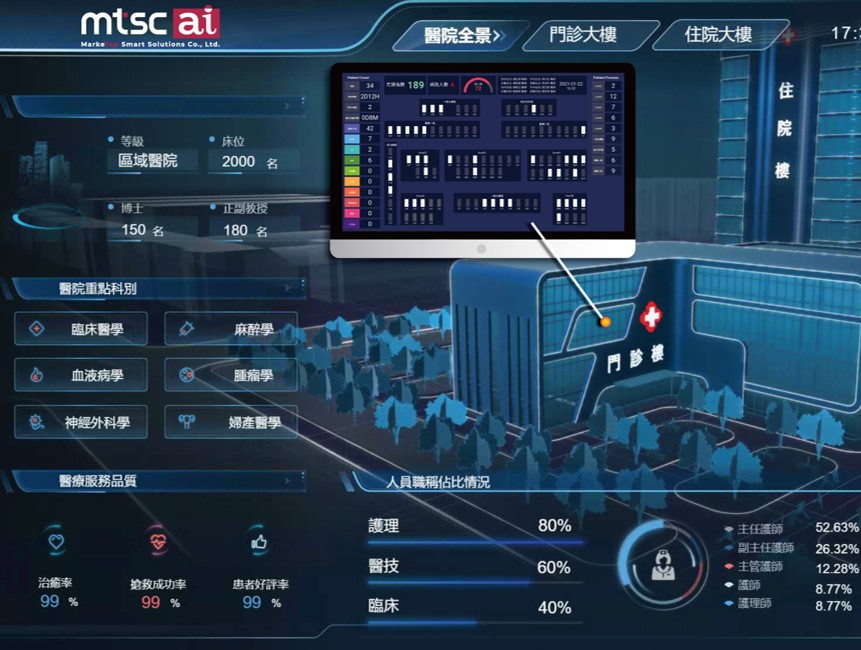Introduction
Mainly applied in regional and higher-level hospitals, the system integrates data from advanced medical equipment, hospital-wide dashboards, and IoT sensors to build a real-time visualization management platform. It enables remote monitoring, process simulation, and flexible resource allocation. By doing so, it helps hospitals effectively reduce energy waste, shorten maintenance response times, and enhance overall operational efficiency.
Features / strengths
■Simulates real-time resource usage, predicts demand, and optimizes allocation for better operational efficiency.
■Integrates hospital data into a virtual model to support data-driven management and cost control.
■Forecasts patient flow to optimize bed and clinical resource planning, reducing wait times and congestion.
■Analyzes clinical workflows to identify risks, enhance safety, and support standardized staff training.
■Evaluates medical activity costs and resource consumption to maximize economic efficiency and drive precision management.
Specification in detail
Data Exchange Center
Integrates hospital-wide dashboards, IoT sensor data, inventory and procurement systems, and advanced medical equipment information.
Simulation and Monitoring
Simulates hospital operations, including patient flow, equipment utilization, and resource allocation.
Forecasting and Decision Support
Analyzes data to predict future medical demands, such as emergency department patient volumes, enabling hospitals to proactively prepare.
Virtual Testing Environment
Allows testing of new workflows, equipment, and technologies within a digital twin environment to evaluate operational impact and reduce experimentation risks.
Equipment Maintenance and Management
Monitors the operational status of medical equipment, predicts and prevents failures, and ensures the continuity of medical services.


